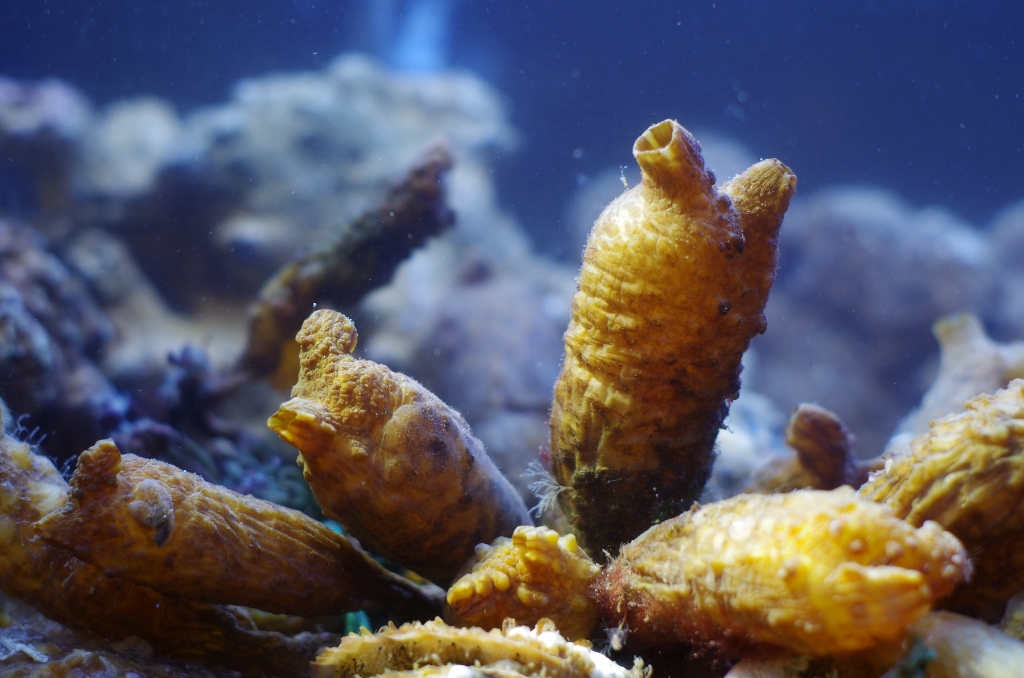In this interview, Professor Bo Dong tells us about his team’s recent study exploring the genomic basis of environmental adaptation in the leathery sea squirt (Styela clava), a highly invasive species of tunicate that has adapted to a broad range of environments. In this study, the authors assembled a chromosomal-level genome and transcriptome of the leathery sea squirt and undertook in situ hybridization and drug inhibition experiments in order to elucidate molecular mechanisms of adaptation. Continue reading to find out what the team found and why it matters, and click here to read the article.

What led to your interest in this topic / what was the motivation for this study?
Our lab works on organ morphogenesis and developmental genomics using an ascidian model. When we collected animals at the sea in Qingdao, China, we found many leathery sea squirts. Previous research has found that the leathery sea squirt is invasive across the globe, and impacts on both marine biodiversity and aquaculture industries. Therefore, we were interested in revealing the genomic basis of its adaptation. In addition, the Wellcome Sanger Institute, in celebration of its 25th anniversary, created a poll of species where the winners would have their genomes decoded. The leathery sea squirt was included in the ‘Dangerous Zone’ category of the poll, and although it did not win this strengthened our determination to decode its genome.

What difficulties did you run into along the way?
In order to obtain a better genome assembly, we used the PacBio sequencing and combined this with Hi-C approach. Because of the small size of leathery sea squirt adults, we tried many times to get enough high-quality DNA from one individual for library construction. In addition, the approaches for functional analysis is fairly limited in this ascidian species. We tried different ways to do dechorionation or microinject the DNA into the eggs, but it was not working well. We are continuing our work on this now.
What is the biggest or most surprising finding from this study?
Compared with the classical ascidian model species Ciona robusta, we found that Styela clava has a genome double the size but with comparable gene number. Another intriguing finding is that cold-shock protein genes were transferred horizontally into the S. clava genome from bacteria. Transfer of these genes provides one of the possible molecular mechanisms for S. clava to adapt the environmental stress, particularly low-temperature stress.
Moving forward, what are the next steps for this research?
We obtained the genetic information and molecular network of environmental adaptation and metamorphosis of leathery sea squirts through high quality genome assembly. Next, we are focusing on two further aspects of this project: 1) we are further digging into the signaling molecules that control the larval metamorphosis experimentally and 2) we plan to reveal the mechanisms for gene transfer from bacteria to ascidians.
What would your message be for students about to start their first research projects in this topic?
First, you should know clearly what kinds of scientific questions you want to ask by genome assembly approaches. Second, try to discuss your research projects with scientists with different backgrounds to adjust your research strategies and analyze your results. Third, compare your genome data with the data from other species to see if your conclusion is a universal one.
What have you learned about science over the course of this project?
Animals are so smart. They use different and unexpected strategies to adapt to environmental stress. Genomic approaches are a powerful way to elucidate the biological mechanisms of adaptation. Experimental results are often different from your expectations.
Describe the significance of this research for the general scientific community in one sentence.
The present study provides a chromosomal-level genome for understanding environmental adaptation in invasive tunicates.
Describe the significance of this research for your scientific community in one sentence.
Our study provides the chromosomal-level genome resources of leathery sea squirt (S. clava) and a comprehensive genomic basis for understanding environmental adaptation and larval metamorphosis.
Citation:
Wei, Jiankai, et al. “Genomic basis of environmental adaptation in the leathery sea squirt (Styela clava).” Molecular Ecology Resources (2020). doi.org/10.1111/1755-0998.13209
